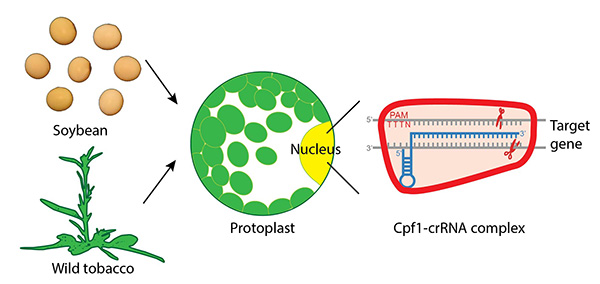주메뉴
- About IBS 연구원소개
-
Research Centers
연구단소개
- Research Outcomes
- Mathematics
- Physics
- Center for Underground Physics
- Center for Theoretical Physics of the Universe(Particle Theory and Cosmology Group)
- Center for Theoretical Physics of the Universe(Cosmology, Gravity and Astroparticle Physics Group)
- Center for Exotic Nuclear Studies
- Dark Matter Axion Group
- Center for Artificial Low Dimensional Electronic Systems
- Center for Theoretical Physics of Complex Systems
- Center for Quantum Nanoscience
- Center for Van der Waals Quantum Solids
- Center for Relativistic Laser Science
- Chemistry
- Life Sciences
- Earth Science
- Interdisciplinary
- Center for Neuroscience Imaging Research(Neuro Technology Group)
- Center for Neuroscience Imaging Research(Cognitive and Computational Neuroscience Group)
- Center for Algorithmic and Robotized Synthesis
- Center for Genome Engineering
- Center for Nanomedicine
- Center for Biomolecular and Cellular Structure
- Center for 2D Quantum Heterostructures
- Center for Quantum Conversion Research
- Institutes
- Korea Virus Research Institute
- News Center 뉴스 센터
- Career 인재초빙
- Living in Korea IBS School-UST
- IBS School 윤리경영


주메뉴
- About IBS
-
Research Centers
- Research Outcomes
- Mathematics
- Physics
- Center for Underground Physics
- Center for Theoretical Physics of the Universe(Particle Theory and Cosmology Group)
- Center for Theoretical Physics of the Universe(Cosmology, Gravity and Astroparticle Physics Group)
- Center for Exotic Nuclear Studies
- Dark Matter Axion Group
- Center for Artificial Low Dimensional Electronic Systems
- Center for Theoretical Physics of Complex Systems
- Center for Quantum Nanoscience
- Center for Van der Waals Quantum Solids
- Center for Relativistic Laser Science
- Chemistry
- Life Sciences
- Earth Science
- Interdisciplinary
- Center for Neuroscience Imaging Research(Neuro Technology Group)
- Center for Neuroscience Imaging Research(Cognitive and Computational Neuroscience Group)
- Center for Algorithmic and Robotized Synthesis
- Center for Genome Engineering
- Center for Nanomedicine
- Center for Biomolecular and Cellular Structure
- Center for 2D Quantum Heterostructures
- Center for Quantum Conversion Research
- Institutes
- Korea Virus Research Institute
- News Center
- Career
- Living in Korea
- IBS School
News Center
Modifying Fat Content in Soybean Oil with the Molecular Scissors Cpf1- Successful inactivation of two genes in soybean using CRISPR-Cpf1 - A team from the Center for Genome Engineering, within the Institute for Basic Research (IBS), succeeded in editing two genes that contribute to the fat contents of soybean oil using the new CRISPR-Cpf1 technology: an alternative of the more widely used gene editing tool CRISPR-Cas9. The results of this new plant gene editing method, applied to soybeans and wild tobacco genes, are published in Nature Communications. CRISPR-Cas9 is the third generation gene editing system, widely used in biology labs all over the world. It contains proteins called Cas9, which act like a "gene scissors", and CRISPR-RNA (crRNA), which guide the "scissors" to edit the DNA at the right position. Previously, IBS scientists employed Cpf1, an alternative to Cas9, to edit human DNA cells. This time, the same research team grappled with editing plant' genes and successfully introduced the CRISPR-Cpf1 complex into plant cells. IBS biologists designed CRISPR-Cpf1 to cut two of the FAD2 genes in soybeans. These genes are part of the pathway that converts fats: oleic acid into the polyunsaturated linoleic acid. By mutating FAD2 genes, the percentage of oleic acid in soybean seeds increases, which result in a healthier oil.
The team also confirmed that CRISPR-Cpf1 did not cut non-targeted locations within the soybean genome. The results demonstrate that CRISPR-Cpf1 is a highly efficient technique. Moreover, this method is 100% DNA-free. It eliminates the introduction of foreign DNA by using chemically synthesized crRNA. This removes the risk of having leftover foreign DNA, like the DNA used as the template for RNA synthesis. IBS scientists also discovered at least three benefits of CRISPR-Cpf1 over CRISPR-Cas9: CRISPR-Cpf1 technique has shorter crRNAs, so the RNA can be synthesized chemically; CRISPR-Cpf1 creates larger deletions (7 base pairs) in the target gene, which is good for making the gene completely inoperative; and the type of cleavage left by Cpf1 might help further gene editing processes. "CRISPR-Cpf1 could be used as a new tool for the development of value-added crops such as a new variety of soybeans with reduced unsaturated fat content," explains Professor KIM Jin-Soo. Letizia Diamante Notes for editors - References - Media Contact - About the Institute for Basic Science (IBS) |
|||
Center for Genome EngineeringPublication Repository |
|||
|
|
| Next | |
|---|---|
| before |
- Content Manager
- Public Relations Team : Yim Ji Yeob 042-878-8173
- Last Update 2023-11-28 14:20













